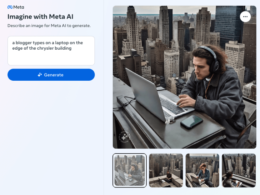Presented by Dell Technologies
The Growing Adoption of Generative AI
One of the hallmarks of digital transformation is rapid innovation that keeps businesses afloat in a sea of competition. Today, generative AI is easily the fastest boat in the race, and organizations are quickly coming on board. According to Salesforce research, 28% of 14,000 workers are currently using generative AI in the workplace, with 32% expecting to use it soon. This excludes the pockets of shadow AI that pervade most companies.
While the adoption rate varies among organizations, the gap between the number of available technology tools and employees’ ability to effectively utilize them is evident. However, as the delta between the two closes, experts believe that generative AI will reshape how knowledge workers work, creating new roles that are highly skilled and well paid.
As an IT leader, there are significant opportunities to educate employees on how to use generative AI services. Training staff to become adept at creating prompts that generate content and leveraging that content to improve their work is crucial. Employees must lean into the training and practice what they learn to truly augment their roles using generative AI.
The Role of Prompt Engineers and Content Curators
While some organizations are recruiting prompt engineers, content curators, and storytellers to harness the power of generative AI, these roles are unlikely to yield many full-time positions. Successfully engineering prompts requires domain knowledge and cross-disciplinary training, making it challenging for individuals to execute prompts for every business line and curate the resulting knowledge.
Instead, generative AI is more likely to augment existing roles rather than create entirely new ones. Prompt engineering will become a sought-after skill that employees cultivate. Organizations are optimistic about generative AI’s impact, with 76% of IT decision makers surveyed expecting significant or transformative results, such as productivity gains, streamlined processes, and cost savings.
While many employees are already using generative AI services to automate tasks, it is essential for humans to fact-check, edit, and perform critical thinking to ensure the accuracy and quality of the outputs. Humans must always be in the loop, providing quality assurance.
The Importance of Training and Reskilling
The rise of generative AI requires a focus on training, education, and reskilling to effectively work with these technologies. Positioning generative AI as a collaborator rather than a usurper of roles is crucial for successful integration. This involves understanding how generative AI capabilities can be infused into employee workflows and incorporating feedback loops to account for user experiences.
Training initiatives should include AI champions who can facilitate peer training and hands-on experimentation. While there may be a need for role reconfiguration, these efforts will help business leaders and staff understand how to use generative AI apps to boost productivity, optimize processes, reduce costs, drive innovation, and add new revenue streams.
However, companies may still face challenges in hiring technical talent to engineer, implement, and operate large language models. Partnering with specialized organizations that work with generative AI technologies can help overcome these hurdles. Trusted advisors can assist in implementing and operating large language models and provide guidance on hardware and architecture.
To fully harness the potential of generative AI, companies must prioritize training their employees to consume generative AI software and services. Delaying this investment may result in falling behind the competition.
Clint Bolton is Senior Advisor, Portfolio Marketing, APEX at Dell Technologies.










